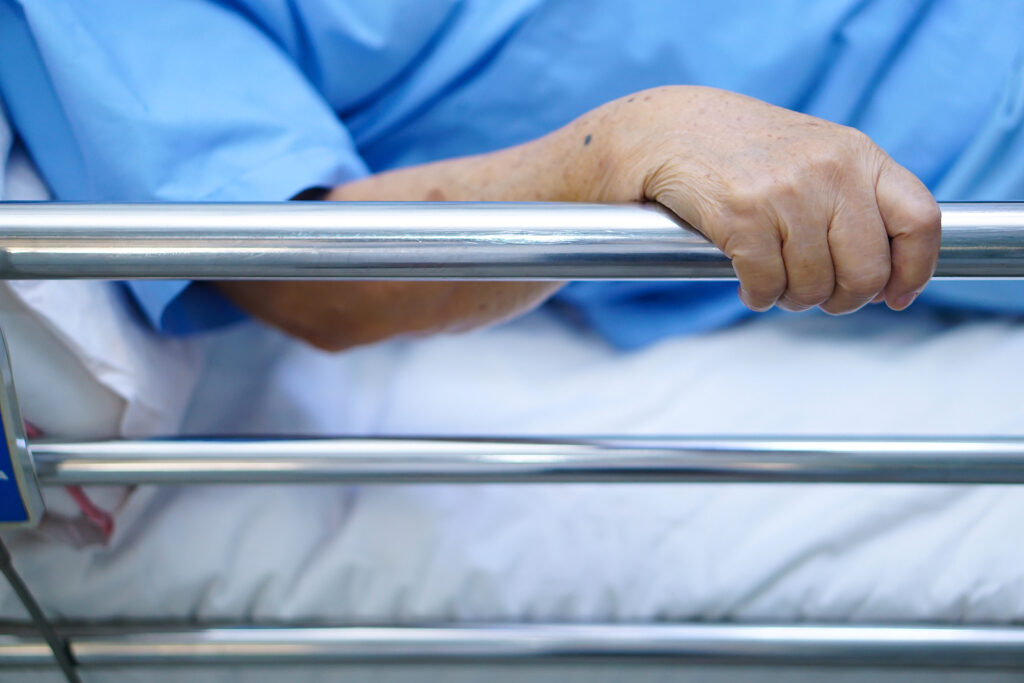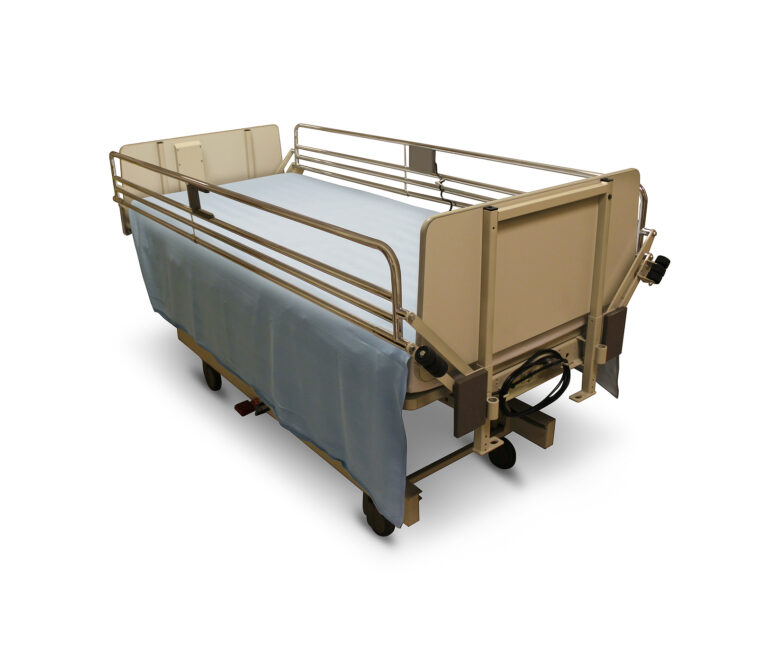DIY Bed Rail for Elderly
As our loved ones enter their golden years, their safety and comfort become our top priority. It's during these precious moments that we start to realize how everyday tasks, like getting in and out of bed, can become daunting challenges for seniors. The bedroom, which should be a place of rest and relaxation, can suddenly become a source of anxiety due to the risk of falls and accidents.
I've personally experienced the worry that comes with knowing that a simple stumble in the bedroom can have serious consequences for our elderly family members. From minor injuries to life-altering outcomes, the potential risks are something we all want to avoid.
That's why I want to share with you a solution that can make a significant difference in enhancing bedroom safety for our seniors: crafting a DIY Bed Rail for Elderly. In this guide, I'll not only discuss the importance of bed rails for seniors but also provide you with detailed, step-by-step instructions on how to create your very own bed rail. Additionally, I'll offer a wealth of tips and strategies to help you create a safer bedroom environment for your loved ones. Let's embark on this journey together to empower our cherished platform beds for seniors and transform their bedrooms into safer havens.
The Significance of DIY Bed Rail for the Elderly
Preventing Falls: A Critical Concern
Falls are a grave concern among the elderly population. According to the Centers for Disease Control and Prevention (CDC), more than three million older adults visit emergency departments for fall-related injuries each year in the United States alone.
These falls can result in fractures, head injuries, and even fatalities. The bedroom is a hotspot for such incidents, where the act of transitioning from lying down to standing up or vice versa can be particularly precarious. DIY Bed Rail for Elderly can serve as a crucial safety net in these situations, offering stability and support, significantly reducing the risk of falls.
Fostering Independence: The Key to Quality of Life
Maintaining independence is a cherished aspect of life, especially for the elderly. Bed rails empower seniors to perform daily activities without constant assistance, preserving their sense of autonomy. Whether it's getting in and out of bed or adjusting their position for comfort, DIY Bed Rail for Elderly provide the extra support seniors need to continue managing these tasks on their own. This independence not only boosts their self-esteem but also enhances their overall quality of life.
A Comprehensive Approach to Bedroom Safety
Beyond the immediate benefits of fall prevention and independence, DIY Bed Rail for Elderly contribute to overall bedroom safety. Seniors can utilize these rails as grab bars to steady themselves while navigating the bedroom. This additional support minimizes the risk of tripping over furniture or rugs, making the entire bedroom environment safer for elderly individuals.

Crafting Your DIY Bed Rail for the Elderly
Now that we have a deeper understanding of the significance of bed rails for the elderly, let's dive into the step-by-step process of creating your very own DIY bed rail.
Materials You Will Need
Before commencing your DIY project, gather the following materials:
- 1×4 Wooden Boards: The quantity of boards you'll need will depend on the desired length of the bed you intend to build. Make sure to measure and plan accordingly to determine the precise number of boards required.
- Screws: Select the appropriate screws for securing the wooden boards together. The length of the screws should be compatible with the thickness of the boards you're using.
- Drill: A drill is a fundamental tool for creating holes and driving screws. Ensure it's in good working condition, and you have the appropriate drill bits for your screws.
- Saw: A saw will be used for cutting the wooden boards to the desired lengths and shapes. Depending on your design, you might need a circular saw, miter saw, or another type of saw.
- Sandpaper: Sandpaper is essential for smoothing rough edges, removing splinters, and preparing the wood's surface for finishing. Different grits of sandpaper may be required for various stages of your project.
- Measuring Tape: Accurate measurements are crucial in woodworking. A measuring tape will help you ensure that your wooden pieces are cut to the correct dimensions.
- Pencil: Use a pencil to mark measurements, create cutting guides, and make any necessary notations on your wooden boards.
- Paint or Wood Stain (optional): If you want to enhance the appearance of your DIY bed frame, you can use paint or wood stain. These finishing options not only add aesthetic value but also protect the wood from moisture and wear over time.
Step-by-Step Guide
Step 1: Precise Measurements
Begin by measuring the length of your bed. The length of your DIY Bed Rail for Elderly should ideally extend a few inches beyond the mattress on both sides. This measurement will serve as the foundation for the entire project.
Step 2: Board Cutting
With your measurements in hand, use a saw to cut the 1×4 wooden boards to the desired length. Remember that you'll need two identical boards for the sides of the bed rail. A precise cut ensures the DIY Bed Rail for Elderly will fit seamlessly with your bed.
Step 3: Smooth Edges with Sandpaper
Safety is paramount. To eliminate the risk of splinters and create a polished finish, use sandpaper to round off the edges of the wooden boards. This step not only enhances safety but also adds an aesthetic touch to your DIY project.
Step 4: Assembling the DIY Bed Rail for Elderly
With your two wooden boards ready, it's time to create the DIY Bed Rail for Elderly structure. Position one board vertically on the side of the bed where you intend to install the rail. Place the second board horizontally, creating an “L” shape. Securely fasten these two boards together using screws. Make sure the connection is robust and capable of withstanding the user's weight.
Step 5: Attaching the Bed Rail to the Bed Frame
Now that you have the bed rail structure, it's time to attach it to the bed frame. Utilize screws to secure the DIY Bed Rail for Elderly firmly in place. Ensure that it is not easily dislodged and can support the user's weight without wobbling.
Step 6: Optional Finishing Touches
If aesthetics are important to you, consider painting or staining the bed rail to match your bedroom decor. Allow ample time for the paint or stain to dry completely before using the DIY Bed Rail for Elderly.
Step 7: Rigorous Stability Testing
Before permitting the elderly individual to use the bed rail, it's imperative to test its stability. Apply pressure to the rail to ensure it can support the person's weight without any signs of wobbling or loosening. Safety always comes first.
Congratulations! Your DIY Bed Rail for Elderly for the elderly is now ready for deployment, providing essential support and safety.

Understanding the Unique Needs of the Elderly
Creating a safe bedroom environment for the elderly requires a nuanced understanding of their unique needs. As individuals age, they may experience physical limitations, reduced mobility, and balance changes. These factors make the bedroom a potential danger zone if not properly adapted.
Physical Limitations: Elderly individuals often face physical challenges such as arthritis, muscle weakness, and joint pain. These conditions can affect their ability to maneuver in and out of bed safely. A well-designed bed rail provides valuable support during these transitions.
Reduced Mobility: Reduced mobility is a common issue among seniors. Simple movements that were once effortless can become strenuous, increasing the risk of falls. Bed rails act as a reliable aid, allowing seniors to maintain their independence by providing stability and assistance.
Balance Changes: Aging can lead to changes in balance and coordination, making it easier to lose equilibrium and fall. Bed rails serve as a sturdy anchor, offering a reliable handhold when needed. This extra support can make all the difference in preventing accidents.
By taking into account these unique needs of the elderly, you can tailor your bedroom safety measures to provide them with the best possible protection. The DIY Bed Rail for Elderly, as discussed earlier, plays a crucial role in addressing these needs and promoting a safer bedroom environment.

Beyond DIY: Commercial Bed Rail Options
While DIY Bed Rail for Elderly offer a cost-effective solution, it's essential to be aware of commercial bed rail options available in the market. These products are designed with careful consideration of safety standards and are often more feature-rich than homemade alternatives.
- Adjustable Height Bed Rails: Many commercially available bed rails come with adjustable height settings, allowing customization to match the user's specific needs. This feature ensures optimal support and safety for individuals of varying heights and abilities.
- Foldable and Portable Bed Rails: Some bed rails are designed to be foldable and portable, making them ideal for travel or temporary use. These rails are convenient for seniors who may need assistance when staying in hotels or visiting friends and family.
- Bed Rails with Additional Features: Commercial bed rails may include additional features such as built-in pockets for storing personal items, padded handles for comfort, and integrated nightlights for improved visibility during nighttime hours.
- Bed Rails for Specific Bed Types: Certain bed rails are designed to accommodate specific bed types, such as adjustable beds or hospital beds. These specialized options ensure a secure fit and optimal functionality.
Additional Strategies for Enhanced Bedroom Safety
Creating a safe bedroom environment for the elderly involves more than just installing a bed rail. Consider implementing these additional strategies for comprehensive bedroom safety:
Illuminate the Bedroom Adequatel: Insufficient lighting can significantly increase the risk of accidents in the bedroom. Ensure that the bedroom is well-lit, especially during nighttime trips to the bathroom. Installing motion-activated night lights can be particularly helpful.
Opt for Non-Slip Flooring: Slippery surfaces can be treacherous for seniors. Consider using non-slip rugs or applying anti-slip coatings to the bedroom floor to reduce the likelihood of falls.
Adjust Bed Height: The height of the bed can greatly impact a senior's ability to get in and out of it safely. Adjust the bed's height to a level that is comfortable for the elderly person, making the process of transitioning in and out of bed less strenuous.
Declutter the Bedroom: A cluttered bedroom is a breeding ground for accidents. Ensure that the bedroom remains free from clutter to eliminate potential obstacles that could lead to falls.
Regular Maintenance: Safety features, including the bed rail, should be inspected and maintained on a regular basis to ensure they remain secure and fully functional. Pay close attention to screws, fasteners, and any signs of wear and tear.
Q1: What are the alternatives to bed rails for elderly?
A1: There are several alternatives to bed rail for elderly individuals who need assistance with safety and mobility in bed. Some common alternatives include:
- Bed Handles: Bed handles or bed assist rails are adjustable bars that can be attached to the bed frame, providing a stable grip for seniors to hold onto while getting in and out of bed.
- Floor Mat Alarms: These alarms consist of pressure-sensitive mats placed on the floor beside the bed. When the elderly person steps onto the mat, it triggers an alarm, alerting caregivers or family members.
- Bedcane: Similar to bed handles, a bedcane is a portable, standalone handrail that can be placed next to the bed to assist with standing up and sitting down.
- Bed Poles: Bed poles are freestanding poles that can be positioned beside the bed. They offer a secure handhold for seniors to assist with bed transfers.
- Adjustable Bed Height: Raising or lowering the height of the bed can make it easier for seniors to get in and out of bed without the need for additional rails.
- Bed Transfer Devices: Devices like transfer boards or sliding sheets can aid in transferring a person from the bed to a wheelchair or chair safely.
Q2: What can I use as a bed rail?
A2: If you're looking for a DIY or temporary solution, you can use items like:
- Pool Noodles: Attach cut pool noodles to the sides of the mattress with straps to create a makeshift bed rail.
- Furniture: Position sturdy furniture, such as a heavy nightstand, against the side of the bed to act as a makeshift bed rail.
- Bedding Rolls: Roll up blankets or towels and place them under the fitted sheet along the bed's edge to create a raised barrier.
- Foam Wedges: Use foam wedges or cushions to create a gentle incline along the bed's edge, providing support and preventing rolling out.
Remember that while these options may provide some assistance, they may not offer the same level of safety as purpose-built bed rails.
Q3: How to make a bed rail at home?
A3: To make a simple bed rail at home, you can try the following steps:
- Gather Materials: You'll need a pool noodle, strong adhesive or zip ties, and straps.
- Cut and Shape the Noodle: Cut the pool noodle to the desired length, typically the length of the bed.
- Attach Straps: Securely attach the pool noodle to the mattress using strong adhesive or zip ties. Ensure it's positioned along the bed's edge.
- Test for Stability: Ensure the homemade bed rail is stable and won't easily shift or come loose during use.
- Cover with Bedding: Place the fitted sheet over the mattress, covering the pool noodle, so it's not visible.
Keep in mind that this DIY solution may not provide the same level of safety as professionally designed bed rails.
Q4: Should dementia patients have bed rails?
A4: The use of bed rails for dementia patients should be carefully considered and monitored. While bed rails can prevent falls and provide support, they may also pose risks, such as entrapment or agitation for some individuals with dementia. It's essential to consult with a healthcare professional or caregiver who specializes in dementia care to assess the patient's specific needs and risks. Alternative safety measures and strategies should be explored, such as lowering the bed, using floor mats with alarms, or ensuring a supervised environment.
Q5: Financial assistance resources for bed rails for seniors step?
A5: Finding financial assistance for bed rails for seniors can vary depending on your location and individual circumstances. Here are steps to explore financial assistance options:
- Medicare and Medicaid: Check if Medicare or Medicaid covers the cost of bed rails. Eligibility and coverage may vary by state and individual circumstances.
- Private Insurance: Contact your private health insurance provider to inquire about coverage for durable medical equipment, including bed rails.
- Nonprofit Organizations: Some nonprofit organizations and charities may offer financial assistance or grants for medical equipment. Research organizations in your area that focus on senior or disability support.
- Local Agencies: Contact local government agencies, such as the Area Agency on Aging or Department of Social Services, to inquire about programs or funding options for seniors.
- Veterans Benefits: If the senior is a veteran, they may be eligible for assistance through the Department of Veterans Affairs (VA). Contact the VA to explore available benefits.
- Community Resources: Reach out to community organizations, churches, or senior centers for information on resources and assistance programs.
- Assistance Programs: Investigate state or federal assistance programs for seniors or individuals with disabilities that may provide funding for necessary medical equipment.
- Crowdfunding: Consider setting up a crowdfunding campaign on platforms like GoFundMe to raise funds for bed rails.
Conclusion
Enhancing bedroom safety for the elderly is a paramount consideration in caregiving. DIY Bed Rail for Elderly for the elderly offer an affordable and effective solution to prevent falls, promote independence, and contribute to overall well-being. By meticulously following the step-by-step guide provided in this article, you can craft a bed rail tailored to your specific requirements. Remember to integrate this DIY project with other safety measures to create a comprehensive approach to elderly care.
Investing time and effort in bedroom safety can substantially improve the quality of life for your elderly loved ones as they age gracefully. Empower them with the independence and security they deserve, and transform their bedroom into a sanctuary of safety and comfort.
Sources
https://www.hse.gov.uk/healthservices/bed-rails.htm
https://www.gov.uk/guidance/bed-rails-management-and-safe-use




